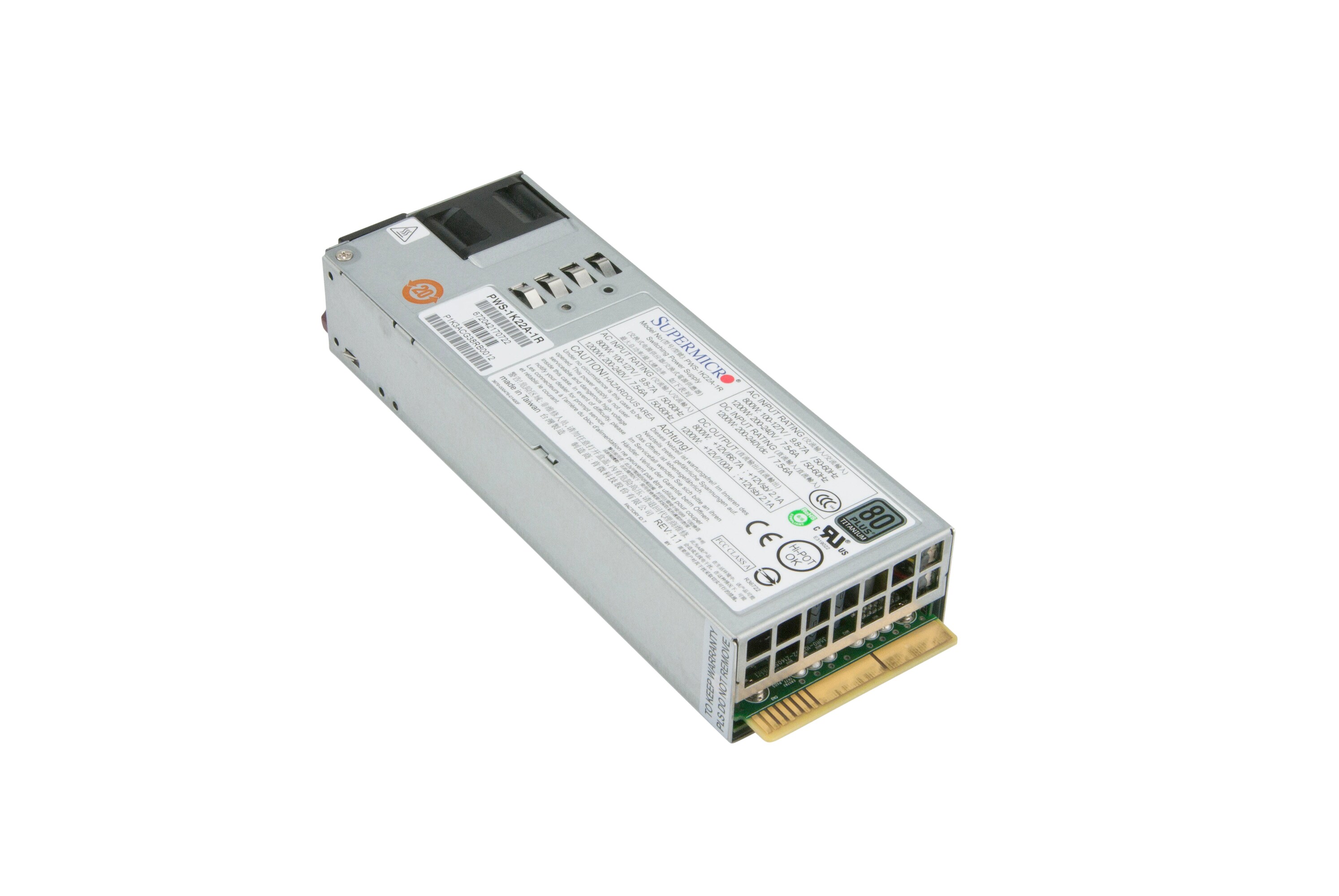Introduction
Welcome to the fascinating world of Bitcoin, where digital currency and technology converge! Bitcoin has recently gained significant attention, as its value skyrockets and more people discover its potential. However, along with its popularity comes a growing concern: the energy consumption associated with Bitcoin mining.
Bitcoin, introduced by an anonymous individual or group under the pseudonym Satoshi Nakamoto in 2009, is a decentralized digital currency that operates on a peer-to-peer network. It enables secure and direct transactions without the need for intermediaries such as banks or governments.
Bitcoin mining, the process through which new bitcoins are created and transactions are audited, involves solving complex mathematical puzzles. This requires substantial computational power and energy consumption. Miners compete to solve these puzzles, and the first one to find the solution is rewarded with newly minted bitcoins.
As the popularity of Bitcoin has grown, so has its energy consumption. The mining process requires vast amounts of electricity, primarily due to the specialized hardware and continuous operation of mining rigs. This energy consumption has raised concerns about the environmental impact and sustainability of Bitcoin.
Bitcoin’s energy consumption is significant when compared to traditional financial systems. Critics argue that the energy used for Bitcoin mining could be better allocated to power homes or industries. Advocates, on the other hand, emphasize the potential benefits of decentralized currency, such as enabling financial inclusion, reducing transaction fees, and providing an alternative to traditional banking systems.
In recent years, the environmental impact of Bitcoin mining has come under scrutiny. The majority of Bitcoin mining operations rely on fossil fuels, contributing to carbon emissions and exacerbating climate change. However, efforts are being made to shift towards renewable energy sources, such as solar and wind power, to power mining operations.
As we delve deeper into the topic of Bitcoin’s energy consumption, we will explore the comparisons with other energy users, the environmental implications, and potential solutions for a more sustainable future. Let us embark on this journey to gain a better understanding of the energy footprint of Bitcoin and its role in the ever-evolving world of digital currencies.
What is Bitcoin?
Bitcoin, the digital currency that has been making waves in the financial world, is a decentralized peer-to-peer cryptocurrency. Unlike traditional currencies, such as the US dollar or the euro, Bitcoin is not regulated by any central authority or government. It operates on a technology called blockchain, which ensures secure and transparent transactions.
At its core, Bitcoin is a digital form of money that can be sent and received electronically. It exists solely in the digital realm and does not have a physical counterpart like coins or bills. Bitcoin transactions are recorded on a public ledger called the blockchain, which is maintained by a network of computers known as miners.
One of the key aspects of Bitcoin is its limited supply. There will only ever be 21 million bitcoins in existence, making it a scarce asset. This scarcity is built into the Bitcoin protocol and ensures that it cannot be arbitrarily inflated like traditional currencies. As more people adopt Bitcoin and mine new coins, the rate at which new bitcoins are created decreases over time.
Bitcoin offers several advantages over traditional forms of money. Firstly, it allows for fast and low-cost transactions, especially when compared to international wire transfers or credit card payments. Bitcoin transactions can be completed within minutes, regardless of geographic location, and the transaction fees are typically much lower than those associated with traditional financial systems.
Another key feature of Bitcoin is its pseudonymity. While transactions on the blockchain are public and can be traced, the identities of the Bitcoin users involved in those transactions are not necessarily known. This provides a certain level of privacy and security for individuals who prefer to keep their financial transactions anonymous.
Bitcoin has gained popularity not only as a form of currency but also as an investment asset. Its value has experienced significant volatility, with both dramatic increases and sharp declines. This volatility has attracted speculators and traders who aim to profit from the price fluctuations of Bitcoin.
In recent years, Bitcoin has started to gain acceptance as a legitimate payment method by businesses and merchants around the world. Major companies like Microsoft, Expedia, and AT&T now accept Bitcoin as a form of payment for their products and services, further solidifying its position as a viable digital currency.
Overall, Bitcoin has disrupted the traditional financial world by offering a decentralized, secure, and fast method of transacting value. Its innovative technology and the potential for financial autonomy have captivated the attention of individuals and businesses alike, leading to its widespread adoption and continued growth in value.
How Does Bitcoin Mining Work?
Bitcoin mining is the process by which new bitcoins are created and transactions are verified and added to the blockchain. It is a crucial component of the Bitcoin network that ensures the integrity and security of the system.
In simple terms, Bitcoin mining involves solving complex mathematical puzzles through a process called Proof of Work (PoW). Miners compete with each other to find the solution to these puzzles, and the first miner to solve it is rewarded with newly minted bitcoins.
To participate in the mining process, miners use specialized computer hardware, known as mining rigs, which are capable of performing the necessary calculations at high speeds. These rigs are usually equipped with powerful graphics processing units (GPUs) or application-specific integrated circuits (ASICs) designed explicitly for mining bitcoins.
When a new transaction is made on the Bitcoin network, it is broadcasted to all the nodes in the network. Miners then collect these transactions and bundle them together into blocks. The size of each block is limited to 1 megabyte (MB), and miners must compete to be the first to create a valid block.
In order to create a valid block, miners must find a specific number, known as a nonce, that, when combined with the data of the block, results in a hash value that meets certain criteria. This process requires immense computational power and involves repeatedly hashing the block data with different nonce values until the desired hash is found.
Once a miner discovers the valid hash value, they broadcast the newly created block to the network. Other miners verify the validity of the block by independently calculating its hash and ensuring it meets the required criteria. If the block is valid, it is added to the blockchain, and the miner who found the solution is rewarded with a predetermined amount of bitcoins, as well as any transaction fees associated with the included transactions.
The mining process also plays a crucial role in securing the Bitcoin network. As each new block is added to the blockchain, it creates a link to the previous blocks, forming an immutable chain of transactions. This makes it extremely difficult for any malicious individual or group to alter or tamper with past transactions, ensuring the integrity and immutability of the Bitcoin network.
However, as the difficulty of mining increases, the computational power required also increases, leading to a significant consumption of energy. This has raised concerns about the environmental impact and sustainability of Bitcoin mining, prompting the search for more energy-efficient solutions.
Despite the challenges, the process of Bitcoin mining is essential for the functioning of the network. It incentivizes miners to contribute their computing power and resources to maintain the security and integrity of the Bitcoin ecosystem.
Energy Consumption of Bitcoin
The energy consumption associated with Bitcoin mining has become a topic of significant debate and concern. Due to the complex computational processes involved, mining requires substantial amounts of electricity. As a result, the energy footprint of Bitcoin has raised eyebrows and prompted discussions about its environmental impact.
Estimating the exact amount of energy consumed by the Bitcoin network is challenging due to the decentralized nature of mining operations and the varying energy sources used. However, several studies have attempted to quantify the energy consumption, and the numbers are staggering.
According to the Cambridge Centre for Alternative Finance, Bitcoin’s annualized electricity consumption as of May 2021 was around 133.68 terawatt-hours (TWh), comparable to the energy consumption of medium-sized countries like Argentina or the Netherlands. This accounts for approximately 0.59% of the world’s electricity consumption.
The energy-intensive nature of Bitcoin mining can be attributed to several factors. Firstly, the specialized hardware required to mine bitcoins, such as GPUs or ASICs, consumes a significant amount of electricity to perform the complex calculations involved in solving the cryptographic puzzles.
In addition to the hardware, the continuous operation of mining rigs adds to the energy consumption. Bitcoin mining operations run 24/7, as the competition amongst miners is fierce and the speed at which blocks are solved directly affects the chances of receiving the mining rewards.
Furthermore, the increasing difficulty of mining poses a challenge. As more miners join the network and the computational power collectively increases, the difficulty adjusts to maintain an average block creation time of approximately 10 minutes. This leads to a continuous escalation in energy consumption as miners strive to find the winning solution in this competitive environment.
It is important to note that the energy consumption of Bitcoin is not evenly distributed globally. China has historically been a major hub for Bitcoin mining, primarily due to its abundance of cheap coal-based electricity. However, in recent years, there has been a shift towards other regions with access to renewable energy sources, such as North America or Europe, in an effort to reduce the carbon footprint associated with mining operations.
While the energy consumption of Bitcoin mining is undeniably significant, the comparison to traditional financial systems is worth considering. Supporters argue that the existing financial infrastructure, including banks, data centers, and physical cash, also consumes vast amounts of energy. Therefore, evaluating the energy consumption of Bitcoin within the context of the broader financial industry is critical for a fair assessment.
In the next sections, we will explore the comparisons of Bitcoin’s energy consumption with other energy users, the environmental impact of mining, and potential solutions for a more sustainable future.
Comparison with Other Energy Users
When discussing the energy consumption of Bitcoin, it is crucial to put it into perspective by comparing it to other energy-intensive activities and industries. While Bitcoin mining does consume a significant amount of electricity, it is important to consider its relative impact in relation to other sectors.
One common comparison made is with the traditional banking system. While it is challenging to calculate the exact energy consumption of the global banking industry, it is known to be substantial. Banks require extensive physical infrastructure, such as branches, data centers, and ATMs, all of which consume energy on a daily basis. Moreover, transaction settlements, online banking operations, and the maintenance of financial databases also contribute to the energy footprint of the banking sector.
Another industry often compared to Bitcoin mining is gold mining. The process of extracting gold from the earth requires enormous amounts of energy, from the exploration and mining of gold deposits to the crushing, grinding, and processing of the extracted ore. Additionally, gold refining and transportation further add to the energy consumption. The environmental impact of gold mining goes beyond just energy consumption, including deforestation, water pollution, and habitat destruction.
Furthermore, the energy used by data centers and their associated infrastructure is significant. Data centers are crucial for the operation of many digital services, including cloud computing, social media platforms, and e-commerce websites. They require substantial amounts of electricity to power the servers, keep them cooled, and maintain high-speed network connections. The rapid growth of data centers is a contributor to overall energy consumption worldwide.
While precise energy consumption figures for these industries and activities may be difficult to determine, it is clear that Bitcoin mining does not stand alone in its energy usage. Many traditional sectors and industries have a substantial appetite for energy, and their environmental impact goes beyond just electricity consumption.
However, it is worth noting that the energy consumption of Bitcoin mining has garnered attention due to its rapid growth and concentrated use of electricity in specific regions. This has prompted discussions about the sustainability of the Bitcoin network and the potential to mitigate its environmental impact.
Efforts are being made to explore energy-efficient mining practices and shift towards renewable energy sources. Some mining operations have started transitioning to renewable energy, such as solar or wind power, reducing their reliance on fossil fuels. Additionally, innovative solutions, like utilizing excess energy from renewable sources that would otherwise go to waste, are being explored to make mining operations more sustainable.
It is important to continue monitoring and evaluating the energy consumption of Bitcoin mining in comparison to other sectors. This allows for a comprehensive understanding of the broader energy landscape and facilitates the development of sustainable practices that can benefit not only Bitcoin mining but also other energy-intensive industries.
Environmental Impact
The environmental impact of Bitcoin mining has become a significant concern as the energy consumption associated with the process continues to rise. The primary environmental concerns stem from the carbon emissions resulting from the use of fossil fuels to power mining operations.
While the exact carbon footprint of Bitcoin is difficult to measure due to the decentralized nature of mining and the varying sources of energy used, it is known that the majority of mining operations heavily rely on coal-fired power plants for electricity. These plants emit greenhouse gases and contribute to air pollution, thus exacerbating the effects of climate change.
According to some estimates, Bitcoin’s carbon footprint is comparable to that of countries like Qatar or New Zealand. Critics argue that the energy used for Bitcoin mining could be better utilized in reducing reliance on fossil fuels or powering homes and industries.
Additionally, Bitcoin mining is predominantly concentrated in regions where electricity is generated from nonrenewable sources, such as coal or natural gas. This further contributes to the environmental impact of mining operations. However, it is important to note that the geographical distribution of mining operations is not static, and there is a shift towards utilizing renewable energy sources in some regions.
Despite these concerns, it is essential to consider the broader context of the environmental impact of financial systems. Traditional banking and financial operations also consume considerable amounts of energy and contribute to carbon emissions through their infrastructure and operations.
Efforts are being made to address the environmental impact of Bitcoin mining and move towards more sustainable practices. One approach is the increasing adoption of renewable energy sources to power mining operations. Miners are exploring options such as solar, wind, or hydroelectric power, which offer a cleaner alternative to fossil fuels.
Furthermore, technological advancements are being made to create more energy-efficient mining hardware. Manufacturers are developing more efficient chips and mining rigs that require less electricity to operate, reducing the overall energy consumption of mining operations.
Some argue that the environmental impact of Bitcoin mining should be seen as a motivational force for accelerating the transition to renewable energy sources. As the demand for renewable energy increases, it can incentivize the development and implementation of sustainable energy solutions on a larger scale.
Continued research and development in energy-efficient mining practices, as well as the integration of renewable energy sources, hold promise for reducing the environmental impact of Bitcoin mining. Balancing the benefits of decentralized currency and financial inclusion with the need to address environmental concerns is a critical challenge in creating a sustainable future for cryptocurrencies.
Renewable Energy Solutions
To address the environmental concerns associated with Bitcoin mining, there is a growing emphasis on transitioning to renewable energy sources for powering mining operations. Renewable energy offers a cleaner alternative to fossil fuels and can significantly reduce the carbon footprint of Bitcoin.
Solar energy, one of the most abundant and widely available renewable energy sources, holds great potential for powering Bitcoin mining. Solar panels can be installed in sunny regions, providing a consistent and renewable source of electricity. Some mining facilities have already begun to harness solar energy to mitigate their reliance on nonrenewable sources.
Wind power is another renewable energy source gaining traction in the Bitcoin mining industry. Wind farms can be established in windy regions, generating electricity through the rotation of turbines. These farms can produce significant amounts of energy, making them viable options for powering mining operations.
Hydroelectric power, generated by harnessing the energy from flowing or falling water, is another popular renewable energy source used in Bitcoin mining. Hydroelectric facilities have the advantage of being relatively reliable and capable of providing a steady supply of electricity, making them an attractive option for mining operations.
Geothermal energy, derived from the heat within the Earth’s crust, is yet another avenue being explored for powering Bitcoin mining. Geothermal power plants can generate electricity by tapping into underground reservoirs of hot water or steam. This form of renewable energy is not dependent on weather conditions, making it a stable and continuous energy source.
As the demand for renewable energy solutions in Bitcoin mining grows, innovative approaches are being developed to integrate mining operations with renewable energy sources. This includes the utilization of excess energy from renewable sources that would otherwise go to waste. By connecting mining operations to these energy systems, miners can reduce their reliance on traditional power grids and decrease their carbon emissions.
Collaboration between the renewable energy industry and the Bitcoin mining sector is essential for driving the adoption of sustainable energy solutions. Partnerships can facilitate the establishment of renewable energy infrastructure specifically designed to meet the energy demands of mining operations.
Furthermore, stakeholders are exploring the possibility of utilizing blockchain technology to enable peer-to-peer energy trading. This would allow renewable energy producers to directly sell excess energy to miners, ensuring the use of clean energy and incentivizing the growth of renewable energy installations.
While the transition to renewable energy solutions in Bitcoin mining is a positive step towards reducing environmental impact, challenges remain. The intermittent nature of renewable energy sources, such as solar and wind power, poses difficulties in maintaining a consistent power supply for mining operations. Energy storage solutions and grid integration will need to be developed to address these challenges effectively.
Overall, by embracing renewable energy solutions and adopting sustainable practices, the Bitcoin mining industry can significantly reduce its environmental impact. Continued innovation, research, and collaboration are crucial for driving the integration of renewable energy into the mining process and establishing a more sustainable future for cryptocurrencies.
Future Outlook
The future of Bitcoin mining holds both challenges and opportunities as stakeholders seek to address energy consumption and environmental concerns while supporting the growth and innovation of decentralized cryptocurrencies.
One key aspect of the future outlook for Bitcoin mining is the increasing adoption of renewable energy sources. This shift towards sustainable practices is driven by the need to reduce carbon emissions and mitigate the environmental impact of mining operations. As renewable energy technologies continue to advance and become more cost-effective, it is expected that more mining operations will transition to cleaner energy sources.
Technological advancements in mining hardware are also expected to play a significant role in the future of Bitcoin mining. Manufacturers are continuously working on developing more energy-efficient mining rigs, allowing miners to achieve the same level of computational power while consuming less electricity. This trend towards energy-efficient hardware will contribute to reducing the overall energy consumption of Bitcoin mining.
Regulatory frameworks around Bitcoin mining are likely to evolve in the future. Governments and regulatory bodies are becoming more aware of the energy consumption associated with cryptocurrency mining and may implement policies to address environmental concerns. This could involve incentivizing or mandating the use of renewable energy sources, imposing energy efficiency standards for mining operations, or promoting transparency in energy consumption reporting.
Additionally, advancements in blockchain technology itself may influence the future of Bitcoin mining. The development of alternative consensus mechanisms, such as Proof of Stake (PoS), which consumes significantly less energy compared to Proof of Work (PoW), could provide a more sustainable approach to securing the blockchain. The implementation of PoS could potentially reduce the energy consumption associated with mining while maintaining the security and decentralization of the network.
Another factor influencing the future of Bitcoin mining is the transition towards greener financial systems. As sustainability becomes a more significant focus in the global economy, there is a growing demand for environmentally conscious investment options. This could drive investors and financial institutions to favor cryptocurrencies that are mined using renewable energy sources, encouraging the adoption of cleaner mining practices.
The scalability and energy efficiency challenges faced by Bitcoin may also pave the way for the development of alternative cryptocurrencies with more sustainable approaches. These alternative cryptocurrencies may prioritize energy efficiency, environmental responsibility, and scalability, attracting users and investors who prioritize sustainability.
Overall, the future of Bitcoin mining is likely to involve a combination of renewable energy adoption, technological advancements, regulatory developments, and the potential emergence of alternative cryptocurrencies. Achieving a more sustainable and efficient mining ecosystem will require collaboration and innovation across various sectors, including energy, technology, finance, and policy.
By addressing the energy consumption and environmental impact of Bitcoin mining, the cryptocurrency industry can navigate a path towards a more sustainable future, where digital currencies and energy efficiency go hand in hand.
Conclusion
The energy consumption and environmental impact of Bitcoin mining have emerged as significant concerns as the popularity of cryptocurrencies grows. While Bitcoin offers the potential for decentralized currency and financial inclusion, it also requires substantial amounts of electricity to sustain the mining process.
Through this exploration of Bitcoin’s energy consumption, it is evident that the mining process consumes a considerable amount of electricity, primarily due to the specialized hardware and continuous operation of mining rigs. The carbon emissions resulting from the reliance on nonrenewable energy sources to power mining operations further amplify the environmental impact.
However, it is essential to consider the broader perspective when assessing the energy consumption and environmental impact of Bitcoin mining. Traditional financial systems, gold mining, and data centers also contribute significantly to energy consumption and carbon emissions.
The future outlook for Bitcoin mining encompasses opportunities for reducing the environmental impact and increasing energy efficiency. The adoption of renewable energy sources, advancements in mining hardware, and potential regulatory frameworks can contribute to a more sustainable mining ecosystem.
Efforts are underway to transition towards renewable energy sources for powering mining operations, such as solar, wind, hydroelectric, and geothermal power. These renewable energy solutions can reduce carbon emissions and mitigate the environmental impact of Bitcoin mining.
Furthermore, advancements in mining hardware can contribute to energy efficiency by developing more energy-efficient chips and rigs. This will help reduce overall energy consumption while maintaining the level of computational power required for mining operations.
Regulatory frameworks and public awareness are also playing vital roles in shaping the future of Bitcoin mining. Increased transparency on energy consumption and the implementation of energy efficiency standards can encourage the adoption of sustainable practices.
The future of Bitcoin mining extends beyond energy consumption to explore alternative consensus mechanisms and the emergence of alternative cryptocurrencies. These developments have the potential to improve scalability, energy efficiency, and overall sustainability in the cryptocurrency space.
As the Bitcoin mining industry continues to evolve, collaboration and innovation across various sectors, including energy, technology, finance, and policy, will be key to realizing a sustainable future. Balancing the benefits of decentralized currency with environmental responsibility is the shared responsibility of stakeholders in the cryptocurrency ecosystem.
By addressing the energy consumption, environmental impact, and embracing renewable energy solutions, the Bitcoin mining industry can contribute to a more sustainable future where digital currencies exist in harmony with efforts to combat climate change and promote energy efficiency.

























